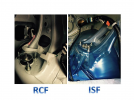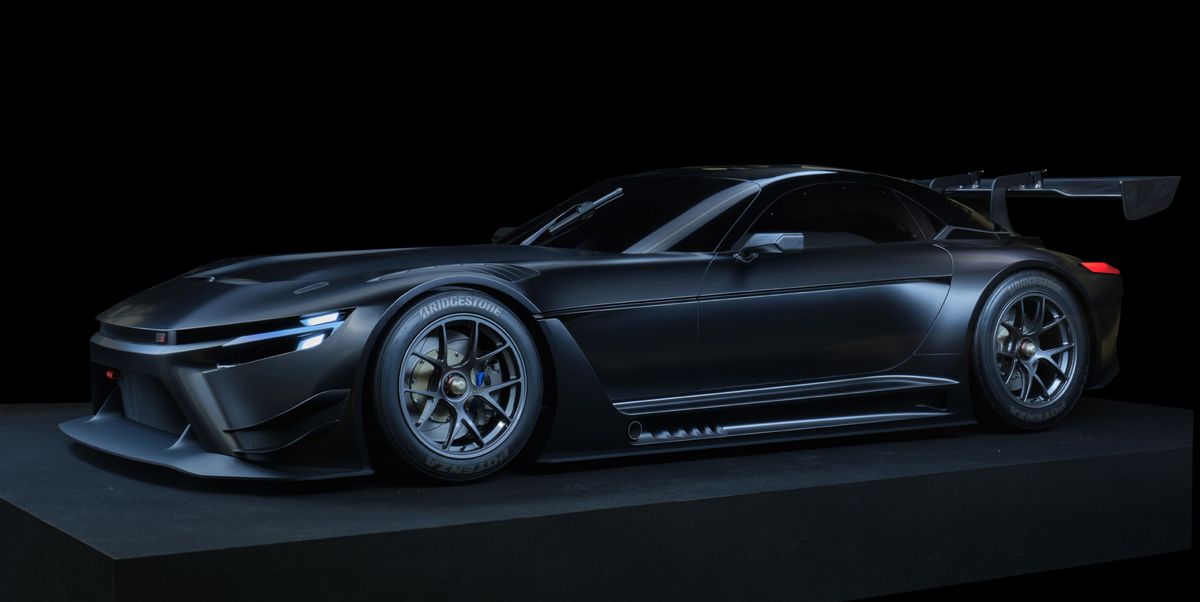Faisal Sheikh
Admirer
- Messages
- 765
- Reactions
- 1,383
^I think so much of the media and internet discussion is on 0-60 or 1/4 mile times, and in those instances, BMW's turbocharged motors have the advantage with low speed/low RPM acceleration, whereas the RC F needs to rev to make power. But once you reach the middle and upper part of the rev range when the 2UR is in it's power band... different ball game. The RC F was walking away from the M4 at the end of that straightaway.
It impresses me beyond belief over what Lexus' F engineers can do even with a platform that is publicly perceived as 'compromised'. The footage speaks for itself there, heck, even its GT3 counterparts are still up there competing for victories against Porsche and Lamborghini, BoP notwithstanding. I personally don't think there's any question to the capability of the car itself, it's genuinely great. If anything I lament the fact that the next generation certainly won't carry over the 2UR, it's a wonderful beast of a motor.Unfortunately, people like to bash Lexus for making "slow, heavy cars", but reality away from the magazines/papers/press cars is very different. I realized it personally from driving as well.
This is an RCF vs M4 duel on the Fuji Speedway race track in the hands of two skilled drivers. They both have some basic mods. RCF has the Novel exhaust, in case you are wondering. As apparent in the video, the RCF does toe-to-toe with the M4. This is something that would never show up on paper in the magazines
It impresses me beyond belief over what Lexus' F engineers can do even with a platform that is publicly perceived as 'compromised'. The footage speaks for itself there, heck, even its GT3 counterparts are still up there competing for victories against Porsche and Lamborghini, BoP notwithstanding. I personally don't think there's any question to the capability of the car itself, it's genuinely great. If anything I lament the fact that the next generation certainly won't carry over the 2UR, it's a wonderful beast of a motor.


Quite the difference here between all of these, even in the IS F it looks pretty busy compared to the BMW, and that's a much older car to the F82 by comparison. On that note, I can't help but wonder why I continue to hear such mixed impressions on the vehicle. Just like I hear such different impressions on the Supra, it's no different here. Either it's an incredible driving machine, or it's being 'held back' on account of its weight. It's easy to see that the suspension is top-notch, the engine, excellent, I can't quite wrap my head around why it hasn't gotten the praise it seemingly deserves. It's a real cool car.Yeah, a lot of those are generalizations not based on reality. Reality is, it is heavily overengineered (which is why it ended up being "heavy"). It actually makes the car more predictable and easier to make it push higher limits when it is setup for very high G-loads. The GT3 RCF basically uses the same engine placement, engine, chassis and suspension components as a starting point as the road going version. The regulation restricts how much you can change from the road-going platform (homologation rules).
Here is a good technical example of what you would never see in the media/internet. This is why RCF is heavy while BMW ended up saving weight at the cost of rigidity and extreme load durability. While they save weight on the chassis, they over-compensate for it by giving it a very stiff suspension. The RCF is the other way around. Chassis is very rigid, which means it does not need an overly stiff damper/spring setup.
The RCF rear subframe has been strengthened twice as much as that of the M4/M3 (F80/F30). There is both doubly reinforcements on the subframe laterally and reinforcements to the upper cross member. This is a picture of ISF, RCF and BMW rear subframe pictures. The explains why the chassis is heavier. This allows for more aggressive coil over setups for very high G-load in the RCF without risks to the subframe, which you cannot do with the BMW M because aggressive coil over setups result for extreme loads (especially in GT3 racing where cars generate heavy G-load) in too much stress on the rear subframe. The BMWs with aggressive coil over setups have a tendency to develop cracks in the rear subframe.
View attachment 5370
BMW:
View attachment 5371
Quite the difference here between all of these, even in the IS F it looks pretty busy compared to the BMW, and that's a much older car to the F82 by comparison. On that note, I can't help but wonder why I continue to hear such mixed impressions on the vehicle. Just like I hear such different impressions on the Supra, it's no different here. Either it's an incredible driving machine, or it's being 'held back' on account of its weight. It's easy to see that the suspension is top-notch, the engine, excellent, I can't quite wrap my head around why it hasn't gotten the praise it seemingly deserves. It's a real cool car.
Least in the meantime I'm happy to say that I've seen a handful around town. Some visually modified, and I gotta say, they're quite a sight. Just wish I got to hear them rev. Oh well.
The 2UR could have been improved a few years ago based on the GT3 engine design. Increase displacement to 5.4L and give it ITBs and dry sump. ~540PS should solve complaints 'it's slow in the straights'.
Is the stock exhaust that restrictive?How Invidia full exhaust makes the OEM exhaust sound totally abysmal (+20 whp is also a nice bonus)
Is the stock exhaust that restrictive?

